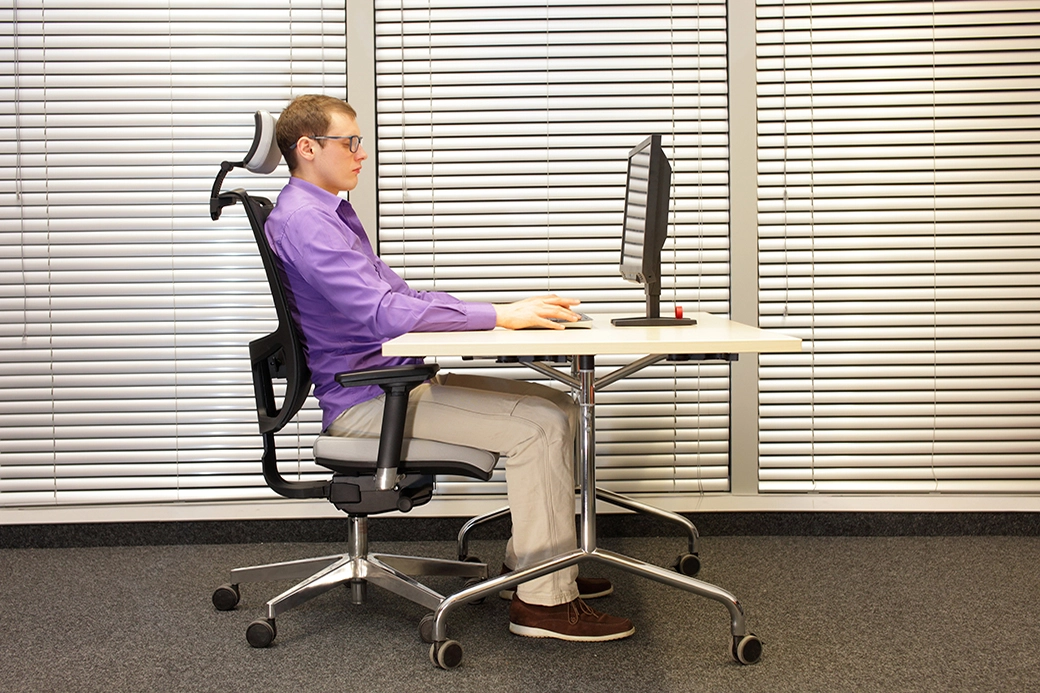If you have piriformis syndrome, you know how painful sitting can be. Here are five tips on how to sit with piriformis syndrome.
Although piriformis syndrome can make sitting painful and difficult, you can try these five tips to help:
- Avoid Sitting (when possible)
- Sit for Short Periods of Time
- Maintain Good Posture
- Use a Proper Lumbar Support
- Periodically Stretch
Using these tips will go a long way in alleviating your pain.
Let’s dig in a little more.
How to sit with piriformis syndrome?
If you have piriformis syndrome you may already be aware of how painful and problematic it can be. Not only can it lead to troublesome spasms in the piriformis muscle, it can make recovery that much more difficult. The best sign it’s improving is a systematic retreat back up toward your buttocks. But, oddly enough, that sometimes involves an increase in pain.
Regardless, with piriformis syndrome, sitting can be far more complicated than just plopping in the nearest chair. If you sit the wrong way, you can aggravate the piriformis muscle. That’ll lead to more spasms, more pain, and more problems.
In light of that, let’s discuss a few steps you can take to modify your sitting habits which, in turn, can help alleviate some of the issues your piriformis syndrome may be causing.
1. Avoid Sitting (if and when you can)
Due to the nature of the lower back, hips, and such where the piriformis muscle is located, it is easy to aggravate your piriformis syndrome when you sit. So, an obvious thing to do would be to avoid sitting entirely, or, at the very least, sit only when you have to.
2. Sit for Short Periods of Time
This goes hand-in-hand with the previous tip. If you must sit, try not to sit for too long. If you can, take frequent breaks and get and move around for a couple minutes before you sit back down.
3. Maintain Good Posture
There’s a couple things to point out here. Maintaining good posture when sitting in a chair is helped considerably if you pick out and use a specially-designed ergonomic chair. That alone will go a long way in easing your symptoms. After that, sit with both feet flat on the floor, sit as upright as possible with your shoulders back, try to keep your hips from sinking beneath the level of your knees, and lastly, make sure any screen you look at is roughly at eye-level.
4. Use a Proper Lumbar Support
You want to maintain the curvature in your lower back (the lumbar spine). This may involve using a small pillow or towel placed in the small of your back to provide support, or it may involve using a seat cushion to help keep the muscles on your rump properly aligned and in balance.
5. Periodically Stretch
This is particularly necessary if you have to sit for a long period of time for work or for some other reason. We mentioned above that you should take occasional breaks. We’d also suggest doing a few stretching exercises during these breaks – anything that’ll keep your piriformis muscle from spasming.
If you follow these tips, you should be able to alleviate many of the problems caused by piriformis syndrome. For example, it may help unpinch a sciatic nerve that may be connected to your piriformis syndrome.

How To Sit in the Car with Piriformis Syndrome?
When you have piriformis syndrome, driving a car is an invitation to agony. Car seats just are not designed with piriformis syndrome in mind. However, there are some measures you can take to alleviate some of the problems involved with driving with piriformis syndrome.
The main such things you can do include:
- Keep Your Feet Aligned (left on rubber pedal, right on gas)
- Keep Both Hands On the Steering Wheel At the Same Height
- Maintain the Curve in Your Lower Back (use pillow or towel, if needed)
- Use Stiff/Hard Seat Pads
- Adjust Your Seat Periodically
All of these should help you from aggravating your piriformis syndrome.
How To Sit in the Couch with Piriformis Syndrome?
If you are wondering about how to sit in a couch when you have piriformis syndrome, I’ll give you a few tips there as well. Because many couches are fairly soft and cushy, the things to watch out for are:
- Keep Your Hips as High as Your Knees, if you can
- If Needed, Use Stiff/Hard Seat Pads To Keep From Sinking In Too Far
- Maintain Good Posture
- Keep Both Feet Flat On The Floor
When it comes to piriformis syndrome, sitting on a couch is fairly similar to sitting in a chair – as far as the softness and the height are concerned. If you just keep your piriformis syndrome in mind, you should do okay.
Where Do You Use a Seat Cushion for Piriformis Syndrome?
If you have piriformis syndrome, a seat cushion could be a very good investment. The cushion could be used in a chair, a car seat, or a couch. The benefit of the cushion is that it will evenly distribute the weight and pressure that normally comes with sitting. The trick is to find one that is stiff enough to stay sturdy, but soft enough to remain comfortable.
Chiropractic Care and Piriformis Syndrome: Case Studies
Before we wrap this up, let’s look a quick look at two scientific case studies:
One study from the Journal of Chiropractic Medicine on Science Direct involved a 32-year-old man with piriformis syndrome symptoms and low back pain. (1) The individual responded positively to the various chiropractic measures utilized.
A study in the Journal of Orthopaedic and Sports Physical Medicine on Movement Science Media discusses a 30-year-old man with piriformis syndrome who was treated with chiropractic exercises. After completing the program, the patient reported 0/10 pain with all activities (Essentially no pain). (2)
Conclusion
Piriformis Syndrome can be a real pain that causes problems in your daily living including how you sit. However, if you follow the above tips, you should be able to manage. If you need more information or guidance, you should contact your nearest chiropractor. We at Better Health Alaska will gladly offer our help.









